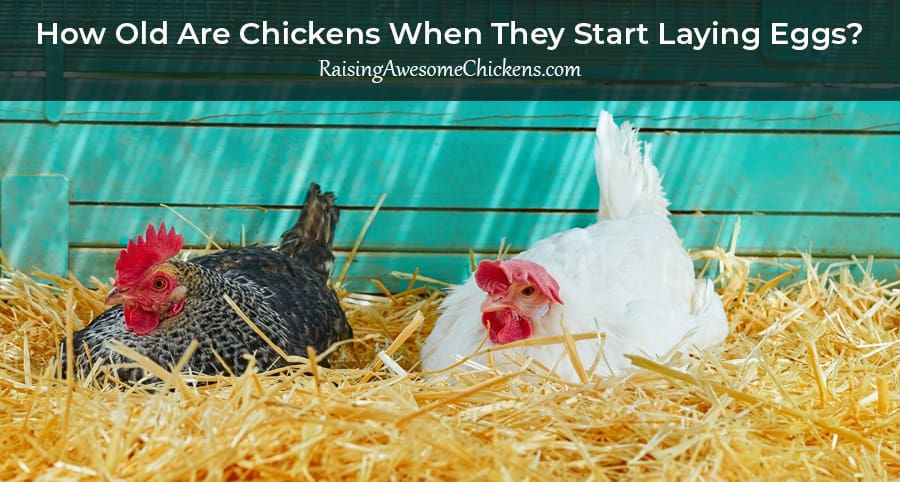Last Updated on February 23, 2024 by AwesomeChickens
Table of Contents
Analyzing Costs and Benefits
Raising chickens for eggs has become increasingly popular among homeowners seeking a more sustainable lifestyle or simply wanting to enjoy fresh eggs. This practice ties into a larger movement towards locally sourced food and self-sufficiency. Raising chickens for eggs has become increasingly popular among homeowners seeking a more sustainable lifestyle or simply wanting to enjoy fresh eggs. However, Is raising chickens for eggs worth it?Before starting a backyard flock, potential poultry keepers should consider several factors including the initial investment in housing, the cost of feed, local regulations, and the time commitment required.

The process of starting a flock requires careful planning. Individuals must select the right chicken breeds for egg production, ensure that they have suitable space for a coop and run, and prepare to manage the daily needs of their birds, which include feeding, watering, and maintaining a clean living environment. These tasks contribute to the overall health and productivity of the chickens.
Furthermore, raising backyard chickens for eggs can be rewarding. It offers the advantage of having control over the conditions in which the chickens are raised, resulting in a potentially higher egg quality compared to store-bought alternatives. However, the benefits must be weighed against the responsibility of animal care, potential noise, and odors, as well as dealing with potential predators and health issues within the flock.
Cost and Economics of Raising Backyard Chickens
When considering backyard chicken farming, one should begin by assessing initial costs. This includes the price of a coop, which varies based on size and complexity. In a typical budget, one should also account for feeding equipment and a feed store supply for the initial setup. Feed expenses recur regularly, forming a significant fraction of ongoing costs.
Feed stores offer various types of feed, affecting both expense and egg production. Nutrition impacts the hens’ health and their ability to lay eggs consistently. For those looking to make the venture cost-effective, buying feed in bulk is often a sensible approach. Additionally, maintaining feeding equipment plays a role in ensuring feed is not wasted.
The potential for selling eggs must be balanced against local regulations, which may require a permit. Revenue from egg sales can mitigate costs and even become profitable, especially when there is an egg surplus. However, market fluctuations should be taken into account when projecting potential income. Those who cannot sell may still benefit from the reduction in household egg expenses.
For individuals considering dual-purpose breeds for both eggs and meat, budgeting extends to butchery and storage provisions post-harvest.
In summary, a precise budget delineating initial and recurring expenses, alongside careful planning regarding potential income from selling eggs, guides one’s decision about the economic viability of raising chickens for eggs. It is essential to factor in all variable and fixed costs to determine if this endeavor can be cost-effective within one’s financial constraints.
Upfront Costs to Raise Chickens
When starting to raise chickens, individuals should budget for various initial expenses. The coop, a primary necessity, can be a significant cost. Prices vary widely based on size, materials, and design, with premade coops ranging from $200 to $2000. Alternatively, constructing a coop could reduce costs, provided the individual has building skills and tools. However, materials still result in expenses, and it’s crucial to ensure a safe, predator-proof environment.
At the feed store, future poultry keepers will encounter the cost of chicks, which can be between $3 to $5 per bird for common breeds. Purchasing mature hens will increase this expense. Additionally, feeding equipment such as feeders and waterers is necessary. These items may range from $5 to $50 each.
Ongoing expenses include chicken feed, costing approximately $15 to $30 per month, depending on the flock size and feed quality. It’s important to provide nutritious feed for optimal egg production.
Below is a summarized table of the upfront costs:
| Item | Cost Estimate |
|---|---|
| Coop | $200 – $2000 |
| Chicks | $3 – $5 per chick |
| Feeding Equipment | $5 – $50 |
| Chicken Feed (Monthly) | $15 – $30 |
The total budget will fluctuate based on individual choices and local prices, but prospective chicken keepers can expect a range of upfront costs crucial for a successful start in egg production.
Ongoing Expenses for Raising Chickens for Eggs
When raising chickens for eggs, one must consider the recurrent costs to ensure the health and productivity of the flock.
Feed:
- Chickens require a steady supply of quality feed. The monthly cost varies depending on the number of chickens, but it typically ranges from $15 to $30 per bird.
Bedding:
- Bedding materials such as straw or wood shavings need to be replaced regularly to maintain hygiene. Expect to spend around $5 to $10 per month for a small flock.
Healthcare:
- Vaccinations and routine deworming are necessary. Though the cost varies, poultry keepers should budget approximately $50 annually per bird.
Utilities:
- Additional expenses include electricity for coop heating and lighting, especially during colder months, which can average $10 to $30 monthly.
Miscellaneous:
- Maintenance of coop structures and fencing, along with replacement of feeders and waterers, can have variable costs.
A summarized table of expenses:
| Expense Type | Estimated Monthly Cost per Bird | Notes |
|---|---|---|
| Feed | $15 – $30 | Quality impacts cost |
| Bedding | $5 – $10 | Depends on coop size |
| Healthcare | $4.17 (Annual $50 / 12 months) | Preventive care |
| Utilities | $10 – $30 | Seasonal variance |
| Miscellaneous | Variable | As needed |
It’s important for individuals to regularly assess and manage these expenses to sustain their egg-producing venture.
Analyzing Cost Efficiency
When assessing the cost efficiency of raising chickens for eggs, it’s essential to measure initial investment against ongoing expenses and egg production rates. Initial costs include purchasing chicks, a coop, feeders, and waterers, while ongoing expenses involve feed, bedding, healthcare, and maintenance.
Budgeting for feed is critical, as it represents a recurrent expenditure. Chickens require a balanced diet to maintain optimal egg production, which can vary in cost. A standard breakdown of expenses per chicken may look something like this:
- Chick Purchase: $3 – $5 per bird
- Coop Setup: $100 – $600 (one-time investment)
- Feed: $15 – $20 per month
- Miscellaneous (bedding, vaccinations, etc.): $10 – $15 per month
The average hen lays approximately 250 eggs per year. Assessing the cost per egg is straightforward when dividing the total annual cost by the number of eggs produced.
- Total Annual Cost per Chicken: Varies based on factors such as the type of feed, healthcare, and coop depreciation
- Annual Egg Production: ~250 eggs
Comparing the cost of home-raised eggs to store-bought ones involves considering the price of organic, free-range eggs, as they are most comparable to backyard eggs.
In practice, economies of scale work in favor of larger flocks. Feed costs can reduce per bird, and a single coop can house multiple chickens, spreading the initial investment over more eggs, thereby enhancing cost efficiency.
It’s important to note that profits might not be immediate. Costs typically decrease as producers become more experienced and can better manage their resources.
Does raising chickens save money?

Raising chickens for eggs can result in savings over time, but it largely depends on initial investments and ongoing costs.
Initial Costs:
- Coop construction or purchase: $300 – $2000
- Chicken purchase: $3 – $30 per bird
- Feeding and watering equipment: $20 – $50
Ongoing Costs:
- Feed: $10 – $40 per month
- Bedding: $10 – $25 per month
- Healthcare: Variable
One must account for the cost of feed, bedding, and any healthcare the chickens may require. These can fluctuate based on local prices and the number of chickens.
Compare with Retail Prices:
- Average cost of a dozen eggs: $1.50 – $4.00
A household that consumes a dozen eggs a week might spend $78 to $208 annually.
Comparison Table:
| Cost Factor | Home-Raised Eggs | Store-Bought Eggs |
|---|---|---|
| Initial | High | $0 |
| Ongoing | $30-$95/month | $2.52/Dozen Grade A* |
On average, chickens lay 5-6 eggs per week. Given proper care and barring unforeseen events, they can be a source of eggs for several years. Over time, the cost per egg can reduce, potentially making raising chickens an economical choice. However, one should consider the effort, time, and potential challenges associated with raising chickens, as these factors may impact the perceived savings.
Raising Chickens vs Buying Eggs

When considering the merits of raising chickens for eggs as compared to purchasing them, one must weigh various factors such as cost, time, and egg quality.
Initial Costs and Upkeep
Raising Chickens:
- Coop construction or purchase
- Feed and water supplies
- Chickens (chicks or hens)
- Routine veterinary care costs
Buying Eggs: - No initial setup costs
Recurring Expenses
Raising Chickens:
- Feed
- Bedding
- Veterinary care
Buying Eggs: - Price per dozen at the store or market
Time and Labor
Raising Chickens requires daily commitments such as:*
- Feeding and watering
- Collecting eggs
- Cleaning the coop
Buying Eggs involves: - A quick trip to the store or market
Quality and Health
Raising Chickens provides:
- Fresh eggs
- Potential for organic, non-GMO feed use
- Control over hens’ living conditions
Buying Eggs: - Variable freshness
- Lack of information on hens’ diet and environment
Environmental Impact
Raising Chickens:
- Potential for reduced carbon footprint
- Waste can be composted
Buying Eggs: - Transportation and packaging contribute to carbon footprint
Individuals must consider their personal circumstances, such as available space, time, and budget, plus their long-term commitment to animal care. There is also the sense of self-sufficiency that comes with producing one’s own eggs to consider. On the other hand, buying eggs can be more convenient and less time-consuming. Therefore, the decision is subjective and hinges upon personal preferences and lifestyle.
Surplus Eggs and Local Selling
When chicken owners experience an egg surplus, they may consider local selling as a viable option. Selling eggs can serve as a way to cover the costs of feed and supplies necessary for raising chickens. It’s important to understand the local demand, set competitive prices, and comply with regulations.
Local demand for fresh eggs can be gauged by connecting with neighbors, local farmer’s markets, and community groups. This interaction also provides insight into the going rates, which helps in setting a fair price point.
Regulatory Considerations:
- Local Laws: Check if a permit is required for selling eggs.
- Health Codes: Ensure that the eggs meet health and safety standards.
Marketing Eggs:
- Labeling: Properly label the eggs with the date of collection.
- Packaging: Invest in egg cartons that protect and present the product well.
Here is an example of a simple price chart that might be used:
| Quantity | Price |
|---|---|
| 6 eggs | $2.00 |
| 12 eggs | $3.50 |
| 24 eggs | $6.00 |
Feed Costs vs. Egg Sales:
| Type | Cost |
|---|---|
| Chicken Feed | $15/month |
| Egg Cartons | $2/10 pack |
| Sales | Varies |
This table can help chicken owners determine if the revenue from egg sales can offset the costs of feed and other chicken care supplies.
Selling eggs is not just about the profit; it’s also about sharing the joy of fresh produce with the community. However, those who raise chickens for meat as well as eggs must carefully consider separate regulations and market demands specific to meat products, which require different handling and compliance standards.
Conclusion

Raising chickens in a backyard setting can indeed be a rewarding endeavor, primarily if one’s goal includes both the joys of keeping poultry and the benefits of fresh eggs. Key considerations such as the initial setup cost, ongoing care, local regulations, and personal time investment play crucial roles in determining the practicality and value of this undertaking.
Financial Aspects:
- Initial Costs: Coop construction or purchase, fencing, and chicken purchase.
- Ongoing Costs: Feed, healthcare, and potential loss due to predators or disease.
Time Commitment:
- Daily feeding and watering.
- Regular coop cleaning.
- Egg collection.
Regulations:
- Confirm compliance with local zoning laws.
Yield:
- On average, a hen lays 5 to 6 eggs per week.
In summary, one may find that the benefits, such as daily fresh eggs and the pleasure of caring for animals, can outweigh the costs and labor, provided they possess the requisite dedication and resources. So, is raising chickens for eggs worth it? The decision is consequently a highly individual one, dependent on a variety of personal variables and preferences.




